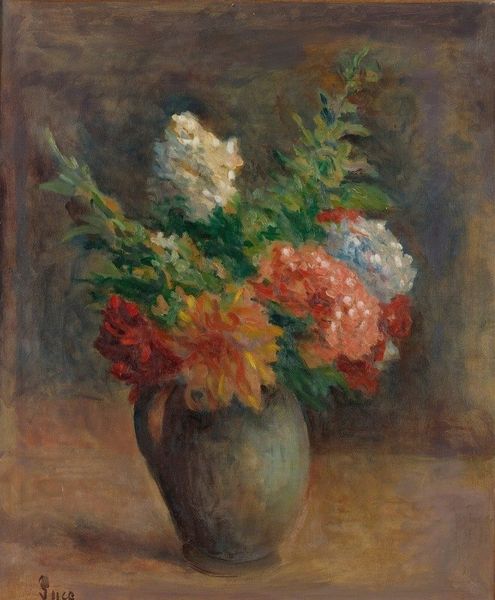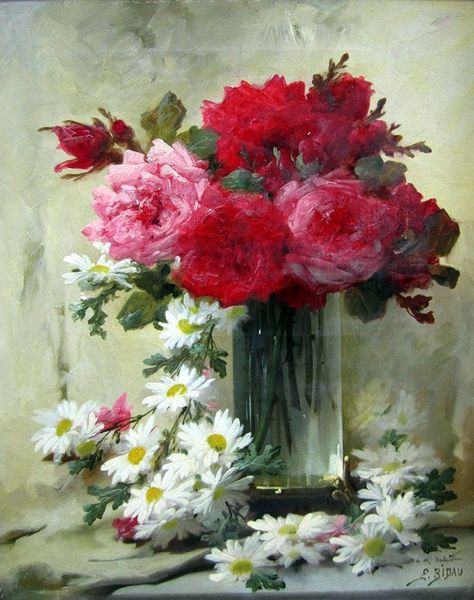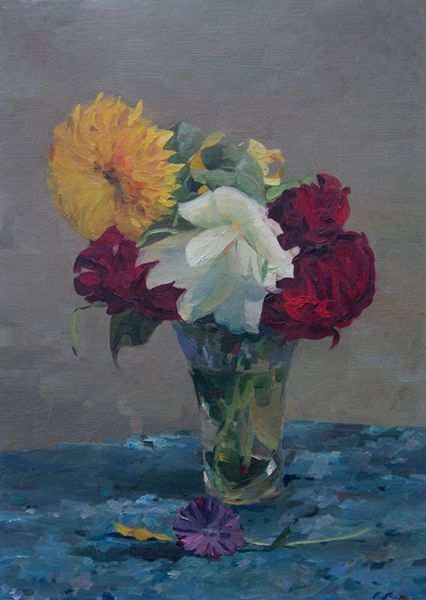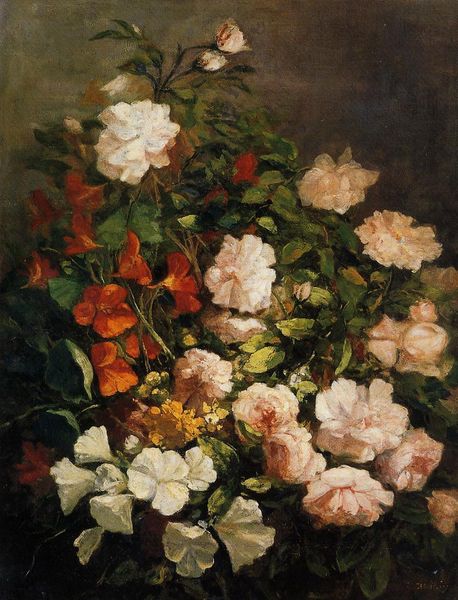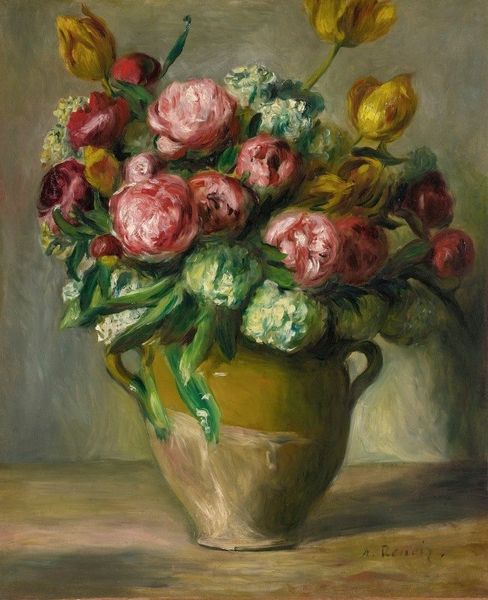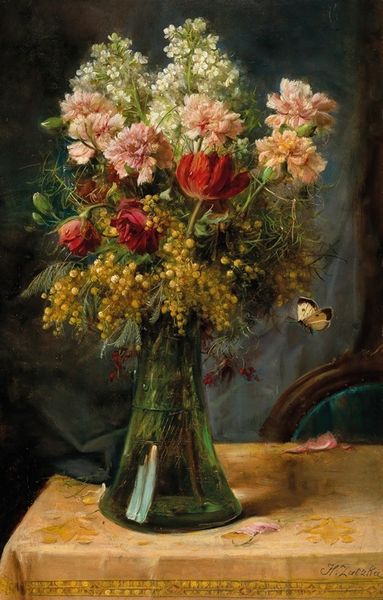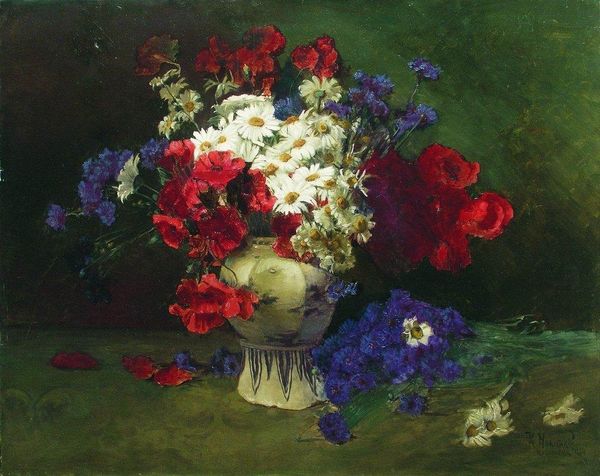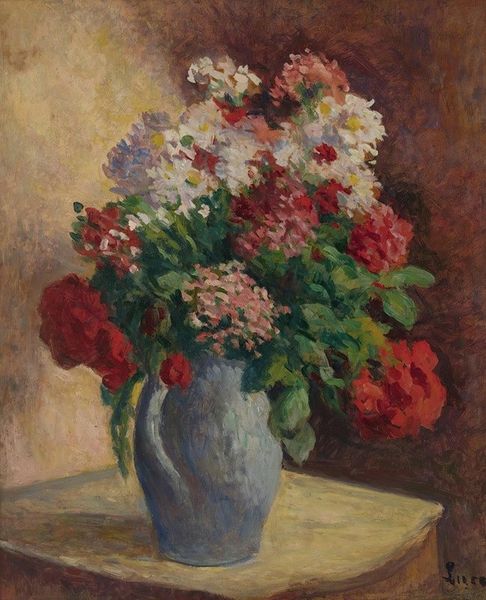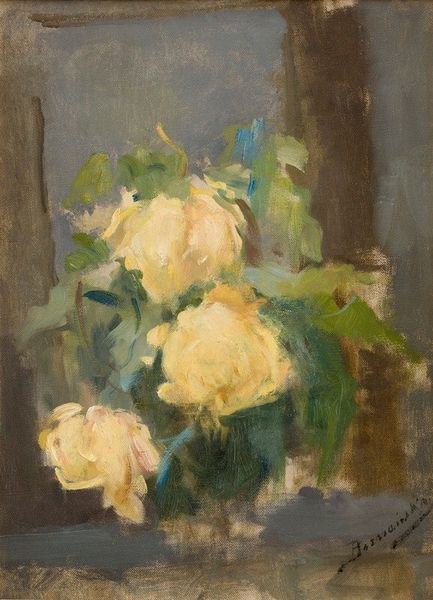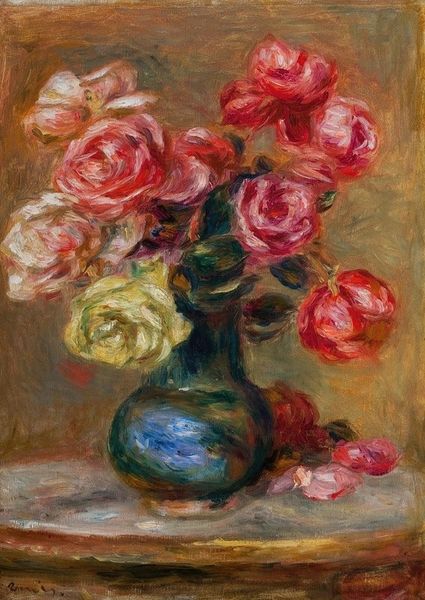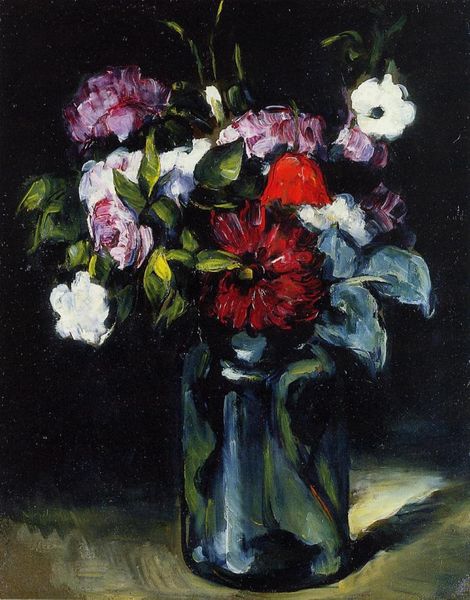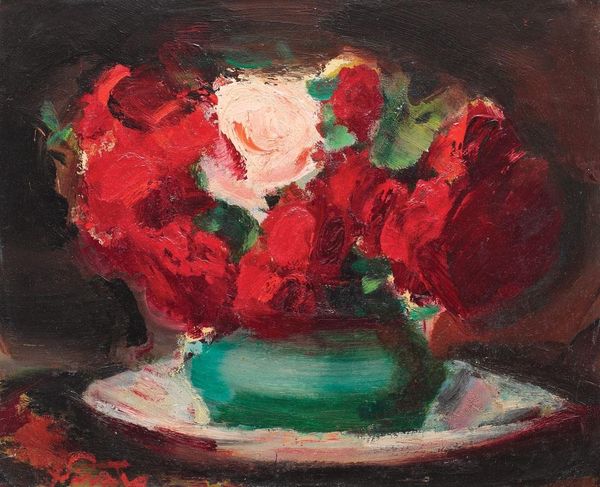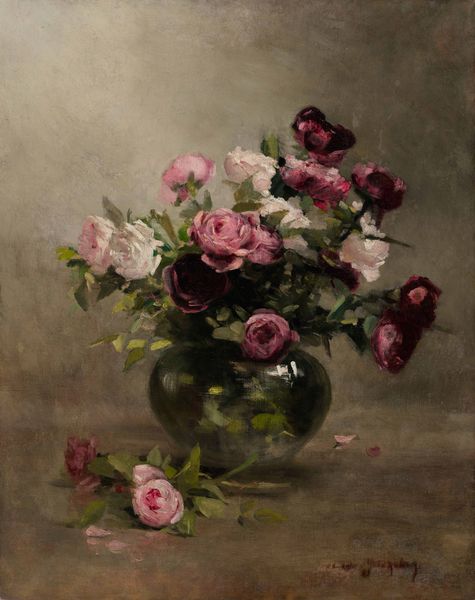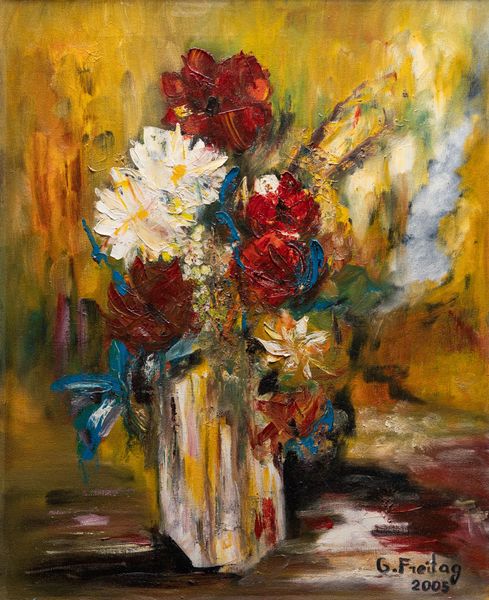
oil-paint, impasto
#
still-life
#
gouache
#
acrylic
#
oil-paint
#
flower
#
oil painting
#
impasto
#
watercolor
#
realism
Copyright: Basuki Abdullah,Fair Use
Editor: We're looking at "Flower" by Basuki Abdullah, painted in oil, with a flurry of impasto textures. It feels quite traditional, but there’s something almost unsettling in the thick application of the paint. What jumps out at you in this piece? Curator: The impasto itself is the story. Consider the labor: each daub, each visible stroke represents a physical act, the artist wrestling with the materiality of oil paint. Look at how the thick paint transforms the flowers from delicate blooms into almost grotesque masses, reflecting the economics of material excess. How does that affect our understanding of “still life?” Editor: So, you are not focused on the representation of flowers as much as the manipulation of the oil paint? I would have thought about it as simple depiction of beauty, a celebration of nature. Curator: Think about the oil paint itself. Where did the materials come from? How was it produced, distributed, sold? What kind of labour went into that production and distribution, before Abdullah even applied it to the canvas? It turns our gaze to the social context behind the painting. Does this ‘realism’ conceal a lot of industrial manufacturing? Editor: I see your point! Thinking about it, the vase, so plainly depicted, is only there to hold these blooms enabled by all the mentioned systems. But do you think he was intentionally making that commentary? Curator: Intent is slippery. The painting, however, is undeniably made of stuff. By foregrounding the materiality, it becomes harder to ignore the network of production that allowed the art object to exist in the first place. The style serves a consumerist appetite. What's interesting is how the physical properties challenge conventional associations to this style. Editor: That shifts my perspective entirely. I went in looking at pretty flowers, but now I see a portrait of production, labour, and the weight of materials themselves. Thanks for pointing that out. Curator: Exactly. Thinking about the means of art-making opens up broader social questions. Materiality makes this process legible.
Comments
No comments
Be the first to comment and join the conversation on the ultimate creative platform.
